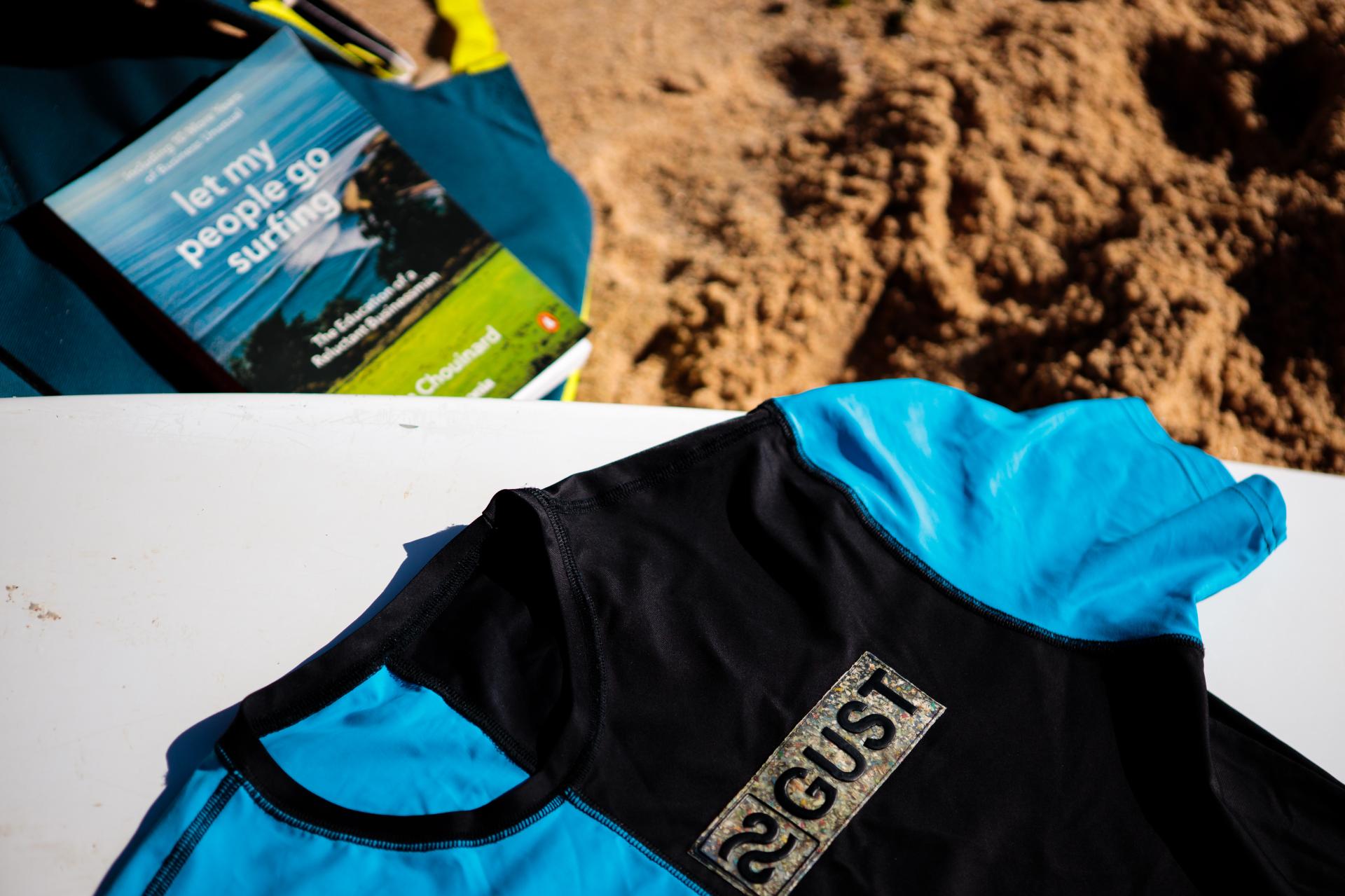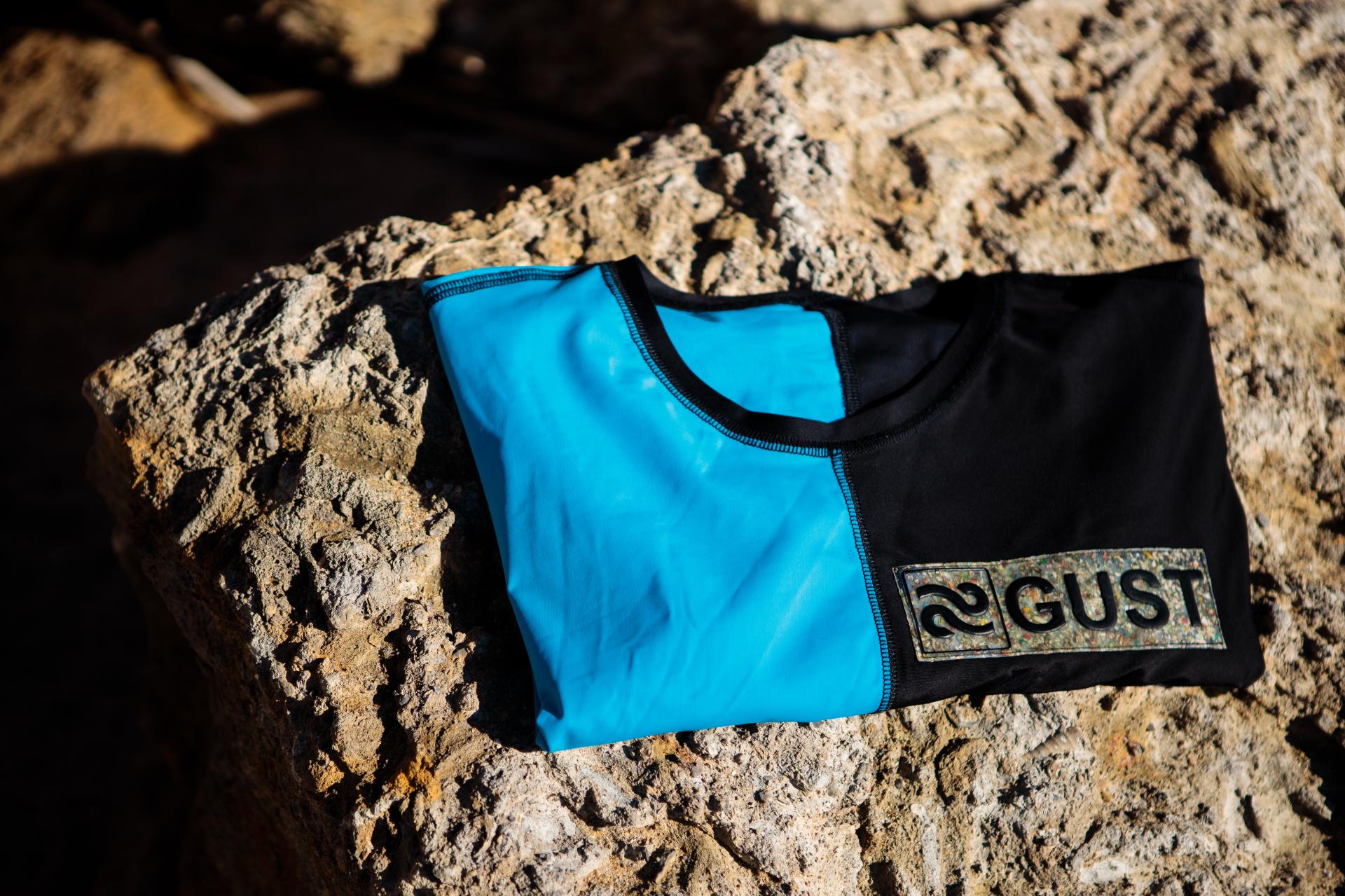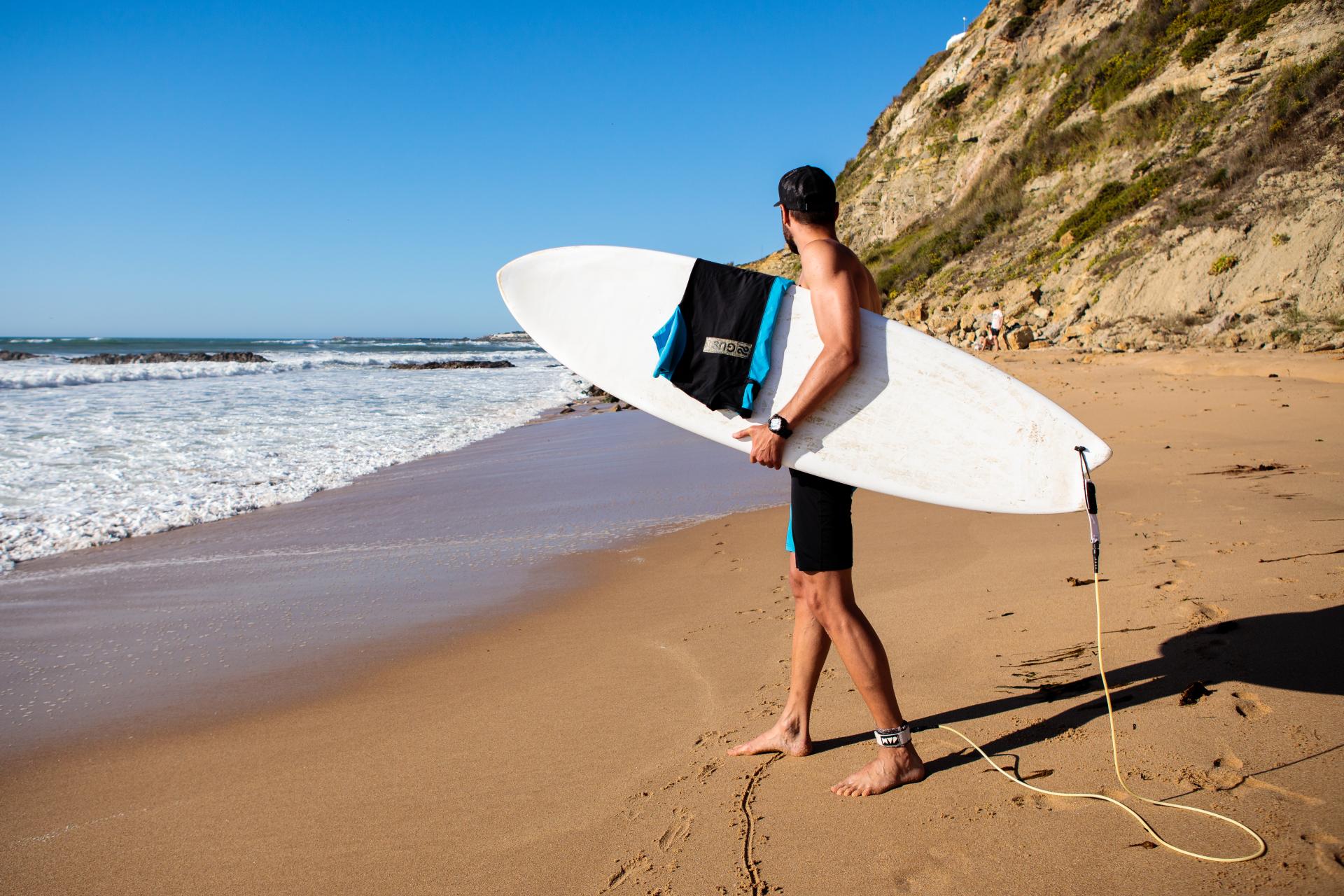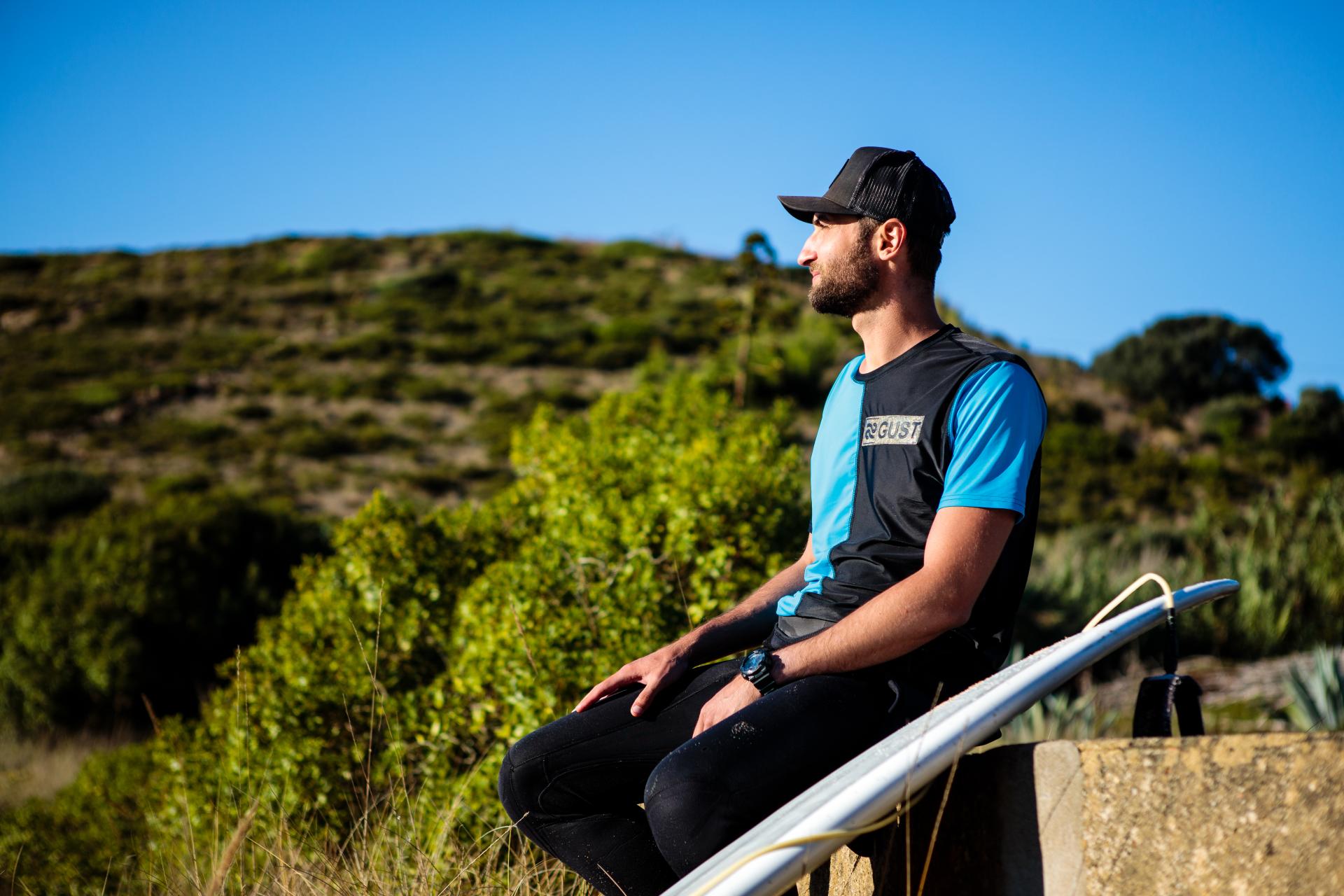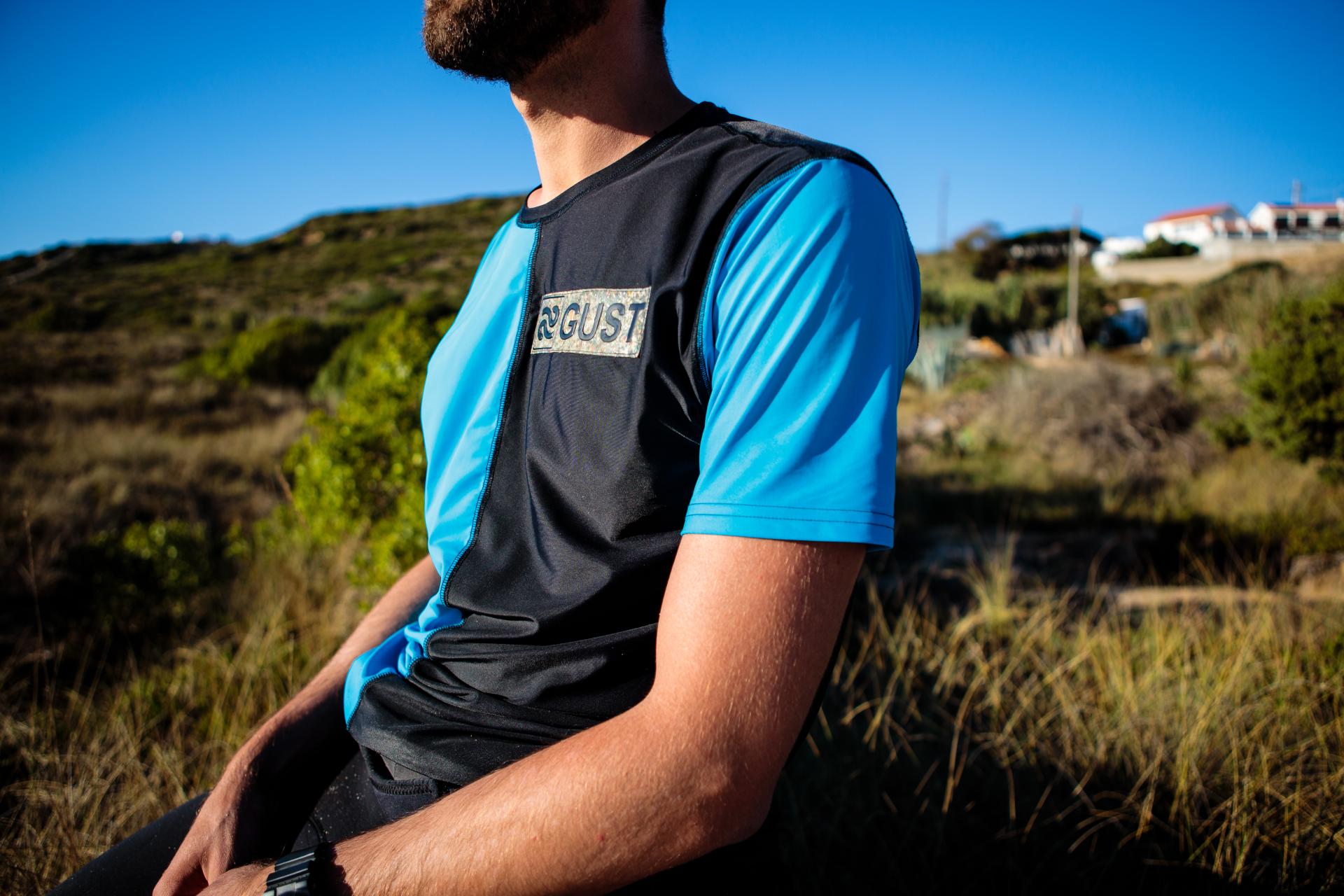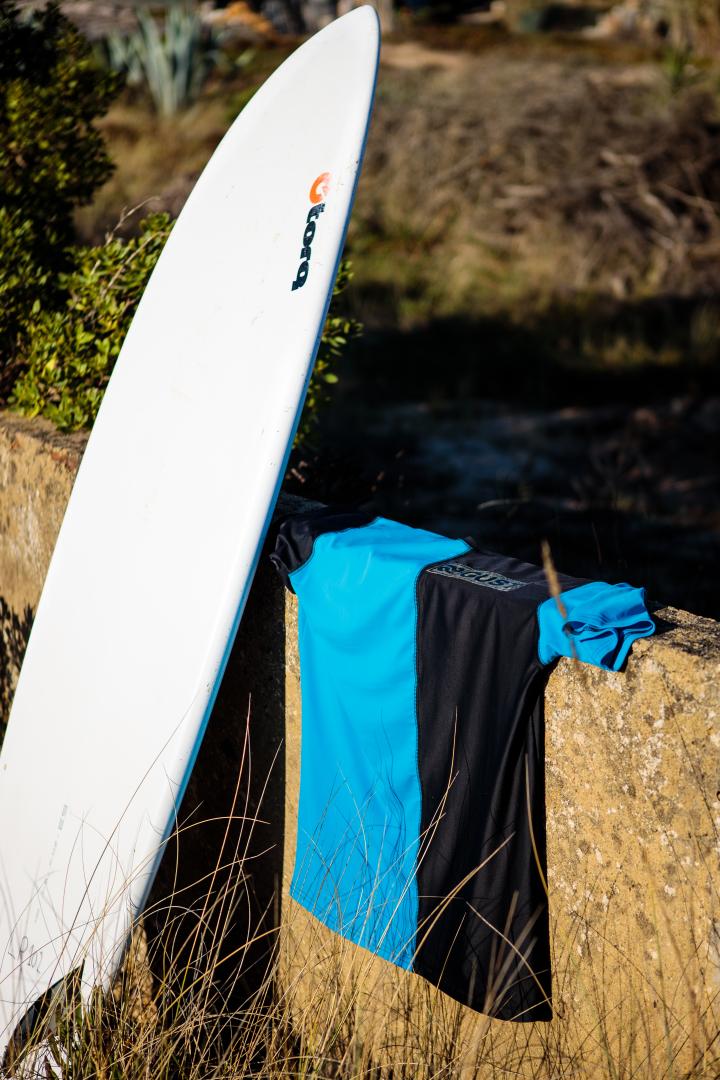Regenerated Nylon Water sports T-shirt
Basic information
Project Title
Full project title
Category
Project Description
We've wanted to develop a water sports UV and rashguard protection T-shirt promoting circular economy. We started the design from the very beginning having in mind the supply chain and the least possible impact towards the environment. The overall water sports industry is not focused the way we expect on sustainability. We thought that more can be done and we want to lead by example because the sea and ocean are our favorite playground and we want to protect it and keep it clean.
Geographical Scope
Project Region
Urban or rural issues
Physical or other transformations
EU Programme or fund
Which funds
Description of the project
Summary
The fashion industry is responsible for 10% of the global greenhouse gas emissions which has significant negative environmental impact. This high percentage is more than international flights and maritime shipping gas emissions combined. Our company produces sustainable water wear clothing for water sports enthusiast and athletes. Since the ocean and the sea are our favorite playground, we want to protect them adequately and keep them clean for the next generations to come. Current water sports clothing gear market is relying heavily on virgin polyester / nylon and petrol- based neoprene products. Our main differentiator from the competition relies on the fact that we start our product design development from the very beginning with a sustainable supply chain in mind and the least possible impact to the environment. We aim to shift customers choices to more sustainable options, we’ve embedded within our products 100% recycled nylon (coming from abandoned fishing nets from Asia), shredded newspaper, recycled polyester sewing thread, recycled care labels, recycled packing and CO2 neutral transportation. We want to cover all the areas where our operations can lower the limited resources of our planet. This is the reason why we also track our CO2 for the T-shirt with the end goal to lower it on each design iteration and keep them to a minimum.
Prototyping and sampling process during garment design is being done with 3D clothing software with the aim to reduce waste and transportation emissions. The recycled nylon products used within our water gear are spandex free with long lasting durability and sustainable elasticity limiting heavily the microplastic released in the environment. We go full speed with sustainability and use 100% recycled materials within our products. From sewing thread up until care labels, zippers, package and shipping, we make sure that our supply adheres to the same values as us.
Key objectives for sustainability
The key objective in terms of sustainability and circularity was to use the waste stream of an industry as a feedstock into another industry. In order to achieve this we started looking at suppliers which are dealing with the abandoned fishing nets from Asia which are mainly made out of nylon. In collaboration with an italian supplier which is using a much more environmental sustainable elastane (called Xlance), we've incorporated their recycled fabrics within our water sports clothings lines. Having the main fabric recycled is not enough for us, so therefore we searched the market as well for 100% recycled sewing thread, care labels and logo. We are working with a companies which adhere to the same values as well, so besides the end product / fabric we are procuring, we are also focused on how they operate as a company. We perform ESG screening on how they manage the electrical energy, water and waste water treatment, ethical labour practices and clean and up to standards facilities. We do admire what Patagonia has done for the industry and we intend to raise the industry standards as they've done. The logo of our brand is done from shredded newspaper which is contributing to a circular loop. Our aim is also to raise the attention of our buyers that upcycling and recycling should be part of our criteria when buying something. Customers can stimulate the companies to incorporate these best practices and contribute to the overall well being of the environment. On each care label, we are raising the awareness to the customer about all the small bits and pieces which are recycled so they understand better that besides the main fabric there are more small items which can be and should be recycled as well (i.e. zippers, locks etc). Each garment has a QR code with a location for disposal in order to close the loop and upcycle or recycled our own products. Current developments is building up this infrastructure at our own atelier for production with more plans to follow.
Key objectives for aesthetics and quality
Aestethics and quality experience is important if we want high adoption from our customers. Having a recycled product is a valuable characteristic, but at the end of the day the user should also find the product at high quality and performance. Especially in the water sports where our users need high UV protection, 4 way stretch, tear and Oil resistant fabrics. We made sure that the selection of the fabrics also took into consideration these attributes as we want for our customers the best possible experience. We want to rely on the 'word of mouth' in terms of sustainability and recyclability education among the users, as well as a reference point for the high quality and performance.
Key objectives for inclusion
Our production atelier is located in Turnu Magurele, Romania where the region was a former textile hub in the past. A lot of well known clothing brands (such as Carhart) left the region due to different reasons and some of the skilled tailors remained without their main loved occupation. The production atelier at this moment consists of 1 female experienced lead tailor from which our company is trying to grow the team with more tailors. The production atelier started small with 1 sewing machine, but now grew up to 3 working stations. Development plans foresee the rental of bigger production place and the purchase of more sewing machines and working stations. A gender equality plan is being followed and we want to have 50/50 ratio within the overall company. In terms of public participation, we intend to present our project to Dutch Design Week as well as other forums where sustainability is part of the public interes. Another event where we would like to participat would be ISPO Munich, which is a sports trade where we want to lead by example and show our values towards the broader market. Initial engagement has been done also with the Dutch Marine Institute and further collaboration will be searched. Same initiatives are also done for the local surf shops across the dutch coast line.
In terms of affordability we are keeping a close attention to the costs. We are having a structured approach of how the end price is defined starting from a fair wage for the tailors. This is one of the reasons why we are making them in Romania, we want to support the labour market in Turnu Magurele and pay the fair price for these kind of services. Additionally we are now preparing a collaboration with some NGO's organisation (such as 1% for the Planet) where we want to contribute with each product we sell. We want that the pricing structure to include a fair contribution towards the entire supply chain and contribute to better awareness about the possibilities.
Results in relation to category
We consider that we can lead by example and shape a circular industrial ecosystem and supporting life-cycle thinking with our product. The results of our project is a traceable water sports T-shirt achieving the expected quality and performance for similar products within the industry (made out with less sustainable sources or practices). CO2 label has been calculated so we can measure and quantify our impact with the end goal of reducing it by each iteration. Documentation for each fabric or sewing item has been checked in order to make sure that the right and relevant documentation is in place and that Notified Bodies or other industry bodies have checked and validated the information. We want to show with our products all the hard work which has been done before the product became available.
How Citizens benefit
Extensive discussion have taken place with the citizens practicing the water sports and have a passion for sustainability. Their feedback has been continously driving us. One of the outcomes of these discussions was the fact that we need to raise awareness about all the small decisions we've taken in order to limit the impact on the environment. One of the examples was the lack of awareness of the microplastic and elastane percentage within the regular fabrics. These kind of details is not something the usual public audience was knowledgeable. We identified that by better explaining it via our social media or by the webshop we can create this awareness.
Physical or other transformations
Innovative character
Traditional clothing companies operate on high amount of orders for fabrics, where sustainability is not on the top criteria, mainly due to performance and quality concerns. Starting with circularity and sustainability as a starter is limiting well known companies to achieve the return on investment which is pursued. Being a start up company, we operate at significantly lower margins and costs and it allows us to be more agile and have our planet best interest in our mind. The innovative character of our project comes from the fact that a product can be easily be build entirely from recycled content with the same performance and quality as the rest of the market. All which is required is will.
Learning transferred to other parties
Show casing the possibilities and our approach, other brands can learn and be stimulated from it. Cross border knowledge transfer can be done also towards carpets or other house deco industries since these are industries relying heavily on virgin fabrics as well. Cross industry communication is key in order to transfer these best practices.

